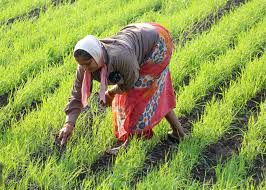Farming methods can be described as the ways or styles a farmer uses or adopts in carrying out his/her farming operations. Farming methods are of different types and the parameter used in classing farming systems may be related to the size of the farm medium on which farming is done (on either soil or water), type of crop grown, mix-up of the crops, style adopted in growing the crops and rearing the animals and so on.
In specific terms, some of the known methods of farming are subsistence farming, commercial farming, shifting cultivation, plantation farming, etc.
The importance of farming system cannot be overemphasized as it provides food, raw material, employment opportunities and income to the farmer and the nation.
Methods of Farming Systems
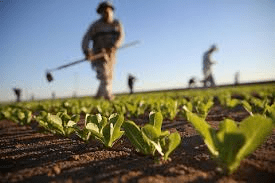
Some of the known farming systems include;
1. Subsistence Farming
This is one of the methods of farming that is characterized by farmers farming on small area of land and may sometimes have his farms in small fragments scattered in different places.
This type of farming is mainly found among peasant or poor farmers. By characteristics;
The farmers have or farm n small piece of land.
They use poor or unimproved inputs for farm production
They are known to always use crude implements in their farming operation.
Mixed cropping system is usually the practice where crops are grown.
Their output is usually small
Production is mostly for family consumption.
Their farmers are usually poor due to low output
Their cost of production is usually low since their farming is carried out on small land area.
2. Commercial Farming
Commercial farming is another type or method of farming where farming activities are carried out on a very large scale on a large area of land. Again, the farm is usually located in one particular area of land.
Characteristics of commercial farming are;
The farms are usually large.
The output from the farm is usually large.
Production is carried out and mostly sold to the public.
In economic terms, the farmers are described as rich farmers due to large volume of sales from large production.
The farms are operated with improved farm machines (mechanized farming).
Cost of production is usually huge due to large areas that need to be farmed
Only one major type of crop or animal is usually farmed on the piece of land.
3. Plantation Farming / Agriculture
This method of farming is the growing of mainly one type of crop on a very large piece of land. Plantation farming is known for the following characteristics;
It involves the growing of mostly one type of crop, which is mostly perennial crop like cashew, mango, timber, rubber, etc.
The farming involves the growing of crops on a very large piece of land.
Modern and improved technologies are used in carrying out farming activities.
Modern inputs like seeds and seedlings are used in carrying out farming operations.
The farming involves huge or investment of large capital to set up.
The system is carried out with the hands of experts or specialists to make it a success.
The system may involve the use of irrigation facilities especially in times of dry season.
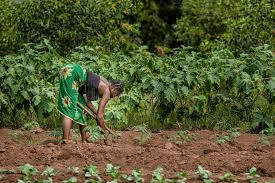
4. Shifting Cultivation
This is one method of farming where a farmer is expected to farm a particular piece of land, A for a short period of time, say 2 – 3 years and thereafter move to another location or farm B to continue his farming while allowing farm A (that was previously cultivated) to fallow for some years before returning to cultivate it again or never return there again.
It is important to note that the system can only be practiced in where the farmer has many plots of land that allows him to migrate from one plot or area to another. Shifting cultivation has the following characteristics;
The system of shifting cultivation mainly involves subsistence farming
Farming is carried out on a small-scale level
Farming is mainly carried out on a small piece of land
The usual method of preparing the land for farming is slash and burning of the debris
The method has a unique method of fertilizing the soil through the ash got from the burning of the debris.
5. Crop rotation farming
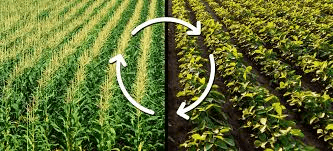
Crop rotation farming as the name implies, is the growing of different types of crops on different plots of land in a definite sequence.
In practicing crop rotation, the piece of land is divided into the number of plots or portions the farmers want the rotation to go through.
Assume the number of plots is four in number. On each plot, different crops are grown and after harvesting, the crops are shifted in a definite sequence
Read Also : Factors Determining Farming System
Some of the advantages of crop rotation are;
It helps to increase farm productivity.
The system helps to save money that would have been used to buy fertilizer to improve the soil fertility
It helps to conserve or improve soil texture and structure
It helps protect soil macro and micro organisms
The system also helps to protect and conserve the soil ecosystem.
Accordingly crop rotation is guided by the following principles;
Deep rooted crops should not follow each other in the sequence.
Shallow rooted crops should not follow each other in the sequence.
Crops likely to be affected by the same diseases should not follow each other in the sequence.
Crops likely to make use of the same type of nutrient should not follow each other in the sequence.
As much as possible, a leguminous crop should be added in the sequence at least to help add nitrogen (macro nutrient) to the soil naturally.
Find below a good chart showing a 4 years plan for the sequence of the crops to use and the sequence they should follow;
Table: Showing chart of crop rotation
| Year | Crops to grow | |||
| Plot 1 | Plot 2 | Plot 3 | Plot 4 | |
| 1 | Yam | Maize | Groundnut | Vegetable |
| 2 | Vegetable | Yam | Maize | Groundnut |
| 3 | Groundnut | Vegetable | Yam | Maize |
| 4 | Maize | Groundnut | Vegetable | Yam |
6. Integrated Pest Management Farming
This is a particular farming system where emphasis is on pest management. The system/method relies so much on pest observation and prevention. The pest are controlled so that they don’t interfere with our crops and animals production process.
The pests are actually gotten rid of through the use of other biological organisms. The biological organisms are used to prey on the pests. By so doing, the number of the pests are either reduced or completely eliminated.
An example of this kind of practice is the use of lizards to depopulate grasshopper in farms. Also, ladybugs are used to devour aphids in farms.
7. Zero Tillage Farming
Zero tillage farming is also known as No-Till agriculture. In this system, only trees and shrubs are cut down while the grasses are not weeded during preparation for planting. In the system, only the spots where the seeds and seedlings are to be planted are slightly weeded.
Agrochemicals such as herbicides are used to control the weeds. In such as case, the soil is never broken by farmers and the sprayed deed grasses only return back to the soil as manure.
8. Mixed farming
Mixed farming is the type of farming that has to do with the growing of crops and the rearing of animals on the same piece of land. The crops could be annual or perennial crops while the animals are like ruminants.
The animals and plants live symbiotically with each other in the farm. The plants provide the animals with leaves which they feed on.
Read Also : Principles and Challenges of Farming Systems
The plants also provide the animals with shelter. In reciprocation, the animals defecate in the farm, thereby providing the plants with manure.
9. Mixed cropping
Mixed cropping is a type of cropping system where different types of crops are planted on the same piece of land and at the same time.
An effective cropping system should ensure that the crops should not form canopy over one another. Meaning to say that the crops should be of almost same growing rate and height.
10. Pastoral farming
Pastoral farming is the rearing of animals in a particular area of land. The animals are reared in a fenced piece of land, where they are medicated, fed and served water.
Some of the animals kept under this system are cattle, sheep, goats, horses camels, etc.
11. Poultry farming
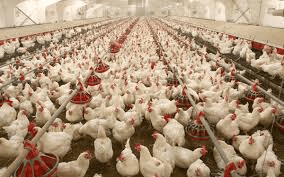
In this type of farming system, birds are kept in the farm. The birds are kept and maintained either under the intensive or extensive housing system.
The birds can as well be reared in cages, batteries, raised floor or open floor. It is in the pens that the birds are medicated, fed and served water. The types of birds raised in poultry farming are; fouls, ducks, ostrich, etc.
12. Nomadic pastoralism
Nomadic pastoralism is a type of farming that involves the rearing of animals in the wild. In this farming, the animals and the shepherd move from one place to another, sometime over several kilometers in search for food and water.
The types of animals reared under this kind of farming system include cattle, sheep and goat.
13. Integrated farming system
Integrated farming system involves a whole lot of specialization as it involves the interrelationship between enterprises in the agricultural activity.
The main aim is to maximize productivity of the farm within specific time frame. Integrated farming system improves the speed of operation of the farm. It also helps to improve the profitability yield capacity of the farm.
14. Irrigated farming system
This is a system of farming that supplies water to the farm or fields that lack sufficient moisture for crop growth. The supply is either mechanically or manually done.
The supplied water helps to increase the moisture content of the soil and as well helps to release the nutrient in the soil for crop growth.
The irrigated water also helps to exact a cooling effect on the plant and so helps to reduce transpiration. Toxins are also removed from the plant through the process.
Relevance / Importance of Farming System
Farming Systems and Methods Report stated that the importance of farming systems has to do with the positive and negative fallouts of the different farming system under consideration.
The importance to a large extent would rely on the farming and farming system being practiced by the farmer. Whatever the case here are some of the importance of farming systems;
Farming system serves as a source of livelihood to many people in the country, Nigeria in particular and the Africa context in general.
It also serves as a business opportunity in the agricultural sector where many people earn their livelihood.
The system helps to to provide a reliable source of raw materials to the agro-industries like sugar, coffee, tobacco, beverages, etc industries.
The system helps to contribute and improve the Gross Domestic Product of the economy.
Apart from oil, farm system is the second largest contributor to the economy.
Farming system also helps to provide employment opportunities to the people of the country.
The system could provide beneficial ground for the combined enterprises. Farming system could help reduce production cost where there is interdependence between enterprises.
Food and other basic needs of man and animals are provided from farming systems.
In conclusion, farming methods are the methods or styles a farmer wishes to use in carrying out his farming activities.
The methods are of different types and they include; subsistence farming system, commercial farming system, shifting cultivation, plantation farming, crop rotation, etc. the different farming methods require different farm resources and so therefore produces different products.
Farming system is actually a decision making unit that comprise of household, cropping and livestock system that transforms land, capital and labour into useful products to the farmers.
Farming systems have much importance among which are the provision of food for human livelihood, business opportunities, and raw materials for our agro-industries, contribution of income to individuals and Gross Domestic Product to the economy of the nation.
Read Also : Waste Management, Types and Classification of Wastes

